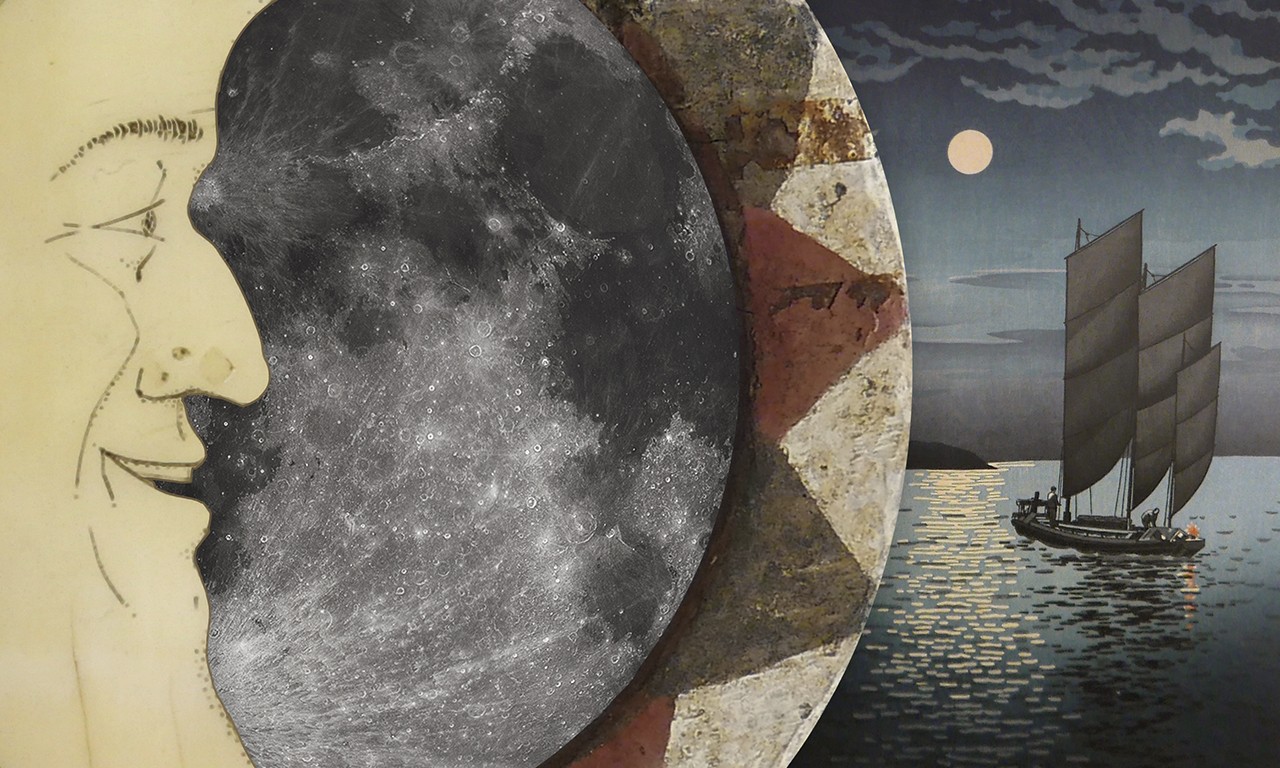 |
| Composite image of the moon and objects in this post. |
One Giant Leap
On July 20, 1969 three humans boarded an aluminum and stainless-steel rocket, rose into the heavens and collectively became the first group to set foot on another celestial body. Taking his first apprehensive steps on the alien scape of the moon, Neil Armstrong famously said “that’s one small step for (a) man, one giant leap for mankind.” Glued to cathode ray tube television sets, the planet watched the live broadcast in awe. Having just passed the 50th anniversary of the first moon landing, the Bowers Blog takes the opportunity to explore objects from five different cultures, each of which illustrate the complex human relationship with the moon prior to setting foot on it.
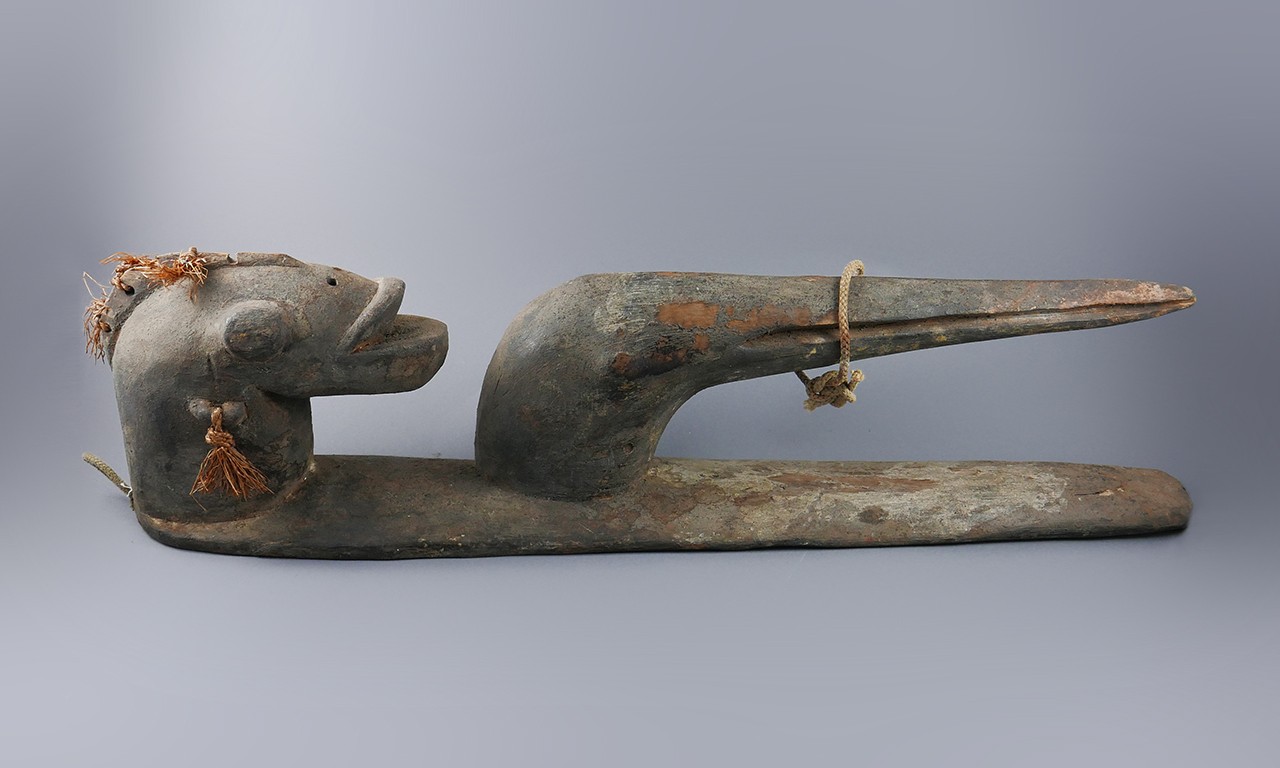 |
Headdress Mask, 20th Century
Iatmul culture; Japandai Village, Middle Sepik River, East Sepik Province, Papua New Guinea, Melanesia
Wood, pigment and cord; 23 1/2 x 3 1/4 x 6 in.
2003.43.18
Anonymous Gift |
The Navel of the Sky
Papua New Guinea’s Sepik River is a region with a rich mythology. Among the Iatmul it is held that the entire universe was formed from the ripples of a great crocodile swimming through the primordial waters. The vast expanse of the river means that the myths about the moon vary but it is widely held that the moon is the navel of a legendary woman. After being cut from her person it jumped up into the sky and came to form an entire new being named Körö. This object is part of a carved headdress where the top face represents the moon and the bottom face represents a mosquito. Both are characters who are portrayed in a Sepik dance but unfortunately, we do not know more about the specific depiction.
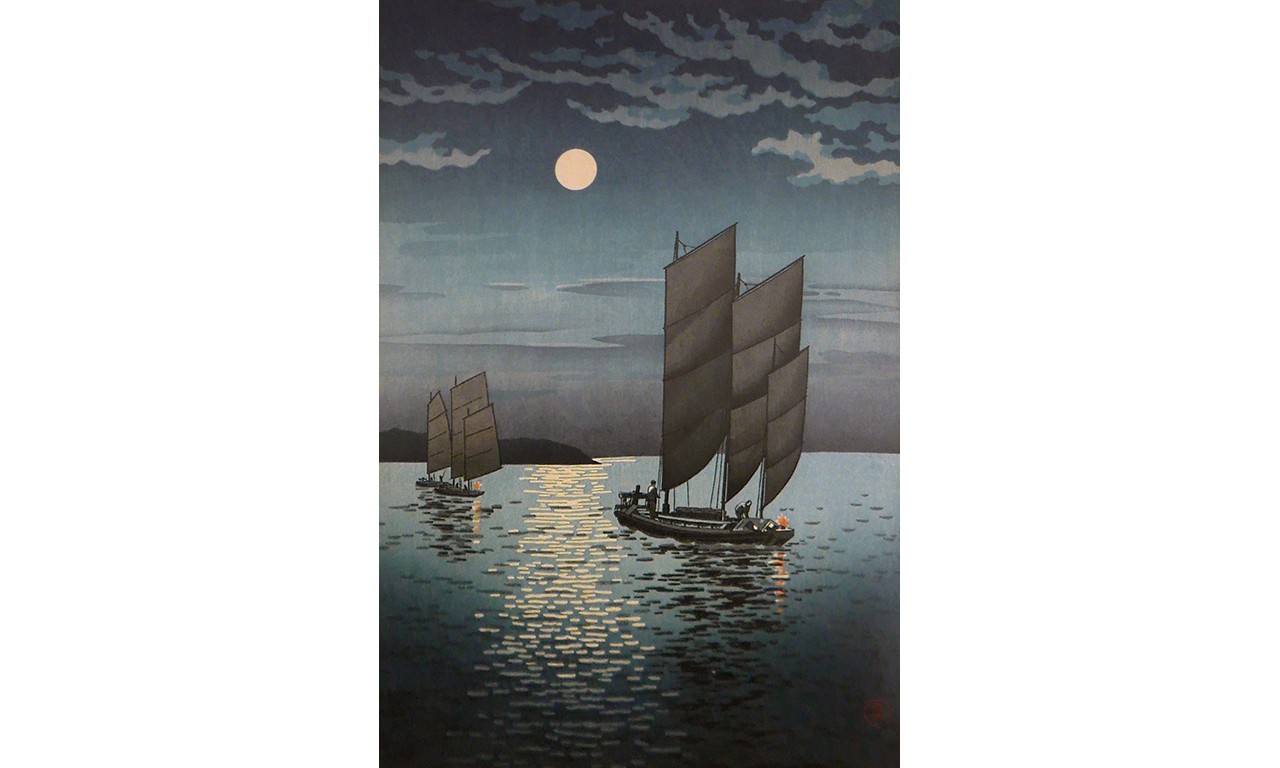 |
Boats at Shinagawa, Night, mid to late 20th Century
Tsuchiya Koitsu (Japanese, 1870-1949)
Woodblock print on paper; 18 x 13 in.
98.17.5A
Gift of Ms. Alice B. Marshall |
Night Fishing
In traditional Japanese Shinto Buddhism the moon is personified by Tsukiyomi, the god of the moon and night who is responsible for killing the Shinto goddess of food, bringing rice to the earth and forever alienating himself from the sun, his sister Amaterasu. By the 20th Century, the moon had largely been stripped of its mythological importance and instead existed as both a cosmic and aesthetic symbol. Boats at Shinagawa, Night by Tsuchiya Koitsu is a shin-hanga, a genre of early 20th century Japanese woodblock print that features western perspective and utilizes the moon and other dramatic sources to bathe scenes in ethereal light. The subject of the scene is a fisherman working by moonlight, a common strategy to assist with catching fish.
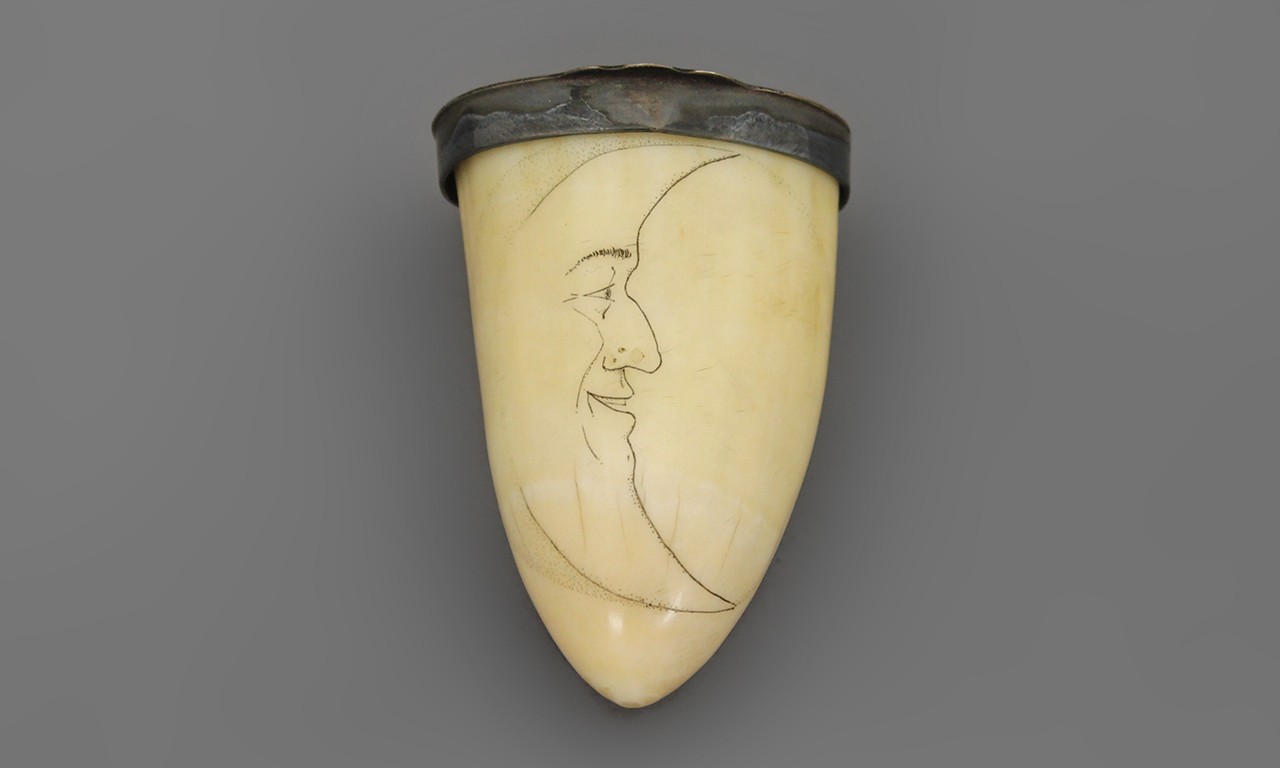 |
Scrimshaw Snuff Box, c. 1870
Unknown artist (American); North America
Sperm whale ivory, silver and ink; 2 1/2 x 1 1/2 x 1 1/2 in.
2011.25.19
Gift of Dr. and Mrs. Burton W. Fink |
When I Heard the Learn’d Astronomer
Stories of the man in the moon and other anthropomorphized depictions of the night orb apparently stem from early astronomers seeing faces in the pocked surface of earth’s satellite. Over time this has developed into images of the moon such as the one featured in this whale tooth scrimshaw, which show the moon with human features such as eyes and a mouth. Like other scrimshaw objects previously featured on the Blog, this carved snuff box was made by a New England whaler sometime in the late 19th Century. With months or sometimes years at sea, whalers had plenty of time to carve spare whale parts into utilitarian or decorative objects. Few were talented enough to create high-quality freehand carvings, indicating that this moon was almost certainly traced from a book.
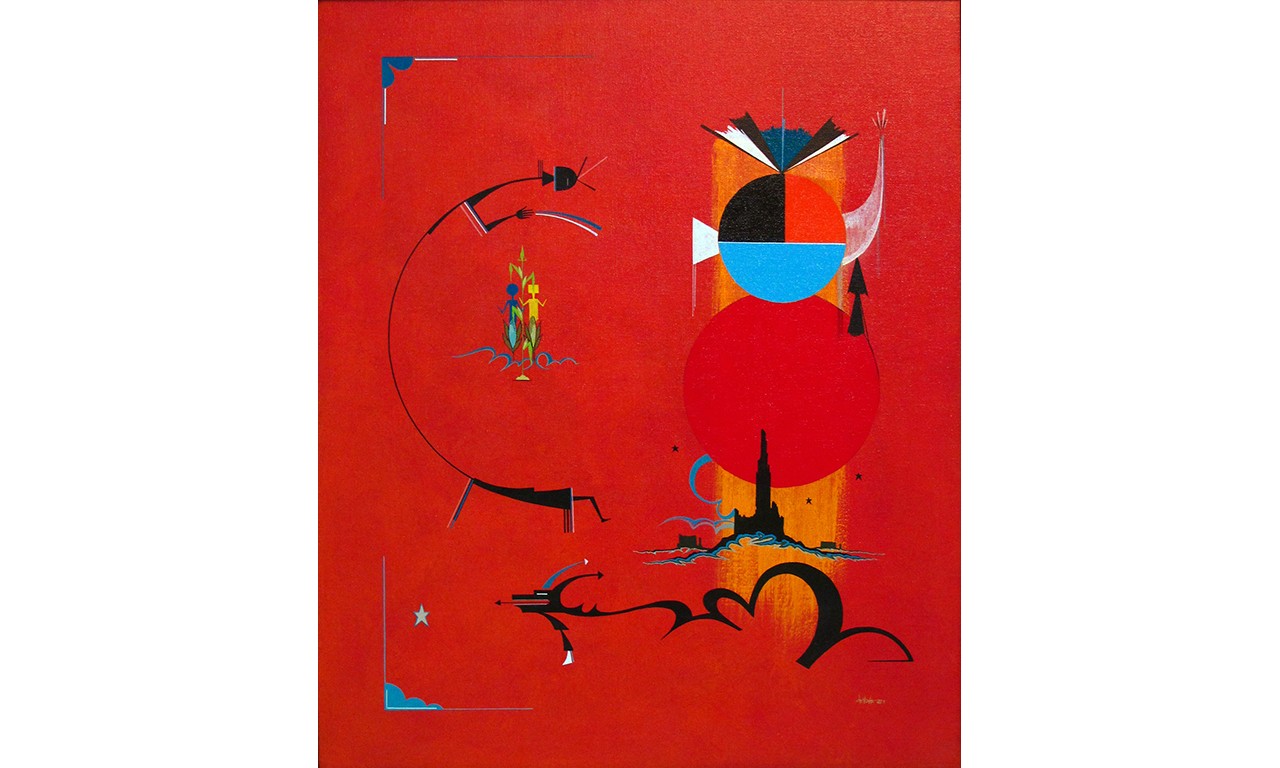 |
Navajo Creation Myth, 1971
David Chetlahe Paladin (American, 1926-1984)
Oil on canvas; 36 x 30 in.
39675
Gift of the Artist |
Painted in Sand
For the Navajo, the moon also served as a key figure of their creation myth. This was painted by David Chetlahe Paladin, a Navajo artist, just two years after astronauts landed on the moon. However, in both style and aesthetic, it relies on traditional forms of Navajo sand paintings. In the artist’s own words this abstracted work shows “when the talking God placed the sun and moon over the earth and created the water serpent to guard it in its place in the Universe.” This is a variant of one of the creation legends used by the Navajo to illustrate cosmological concepts.
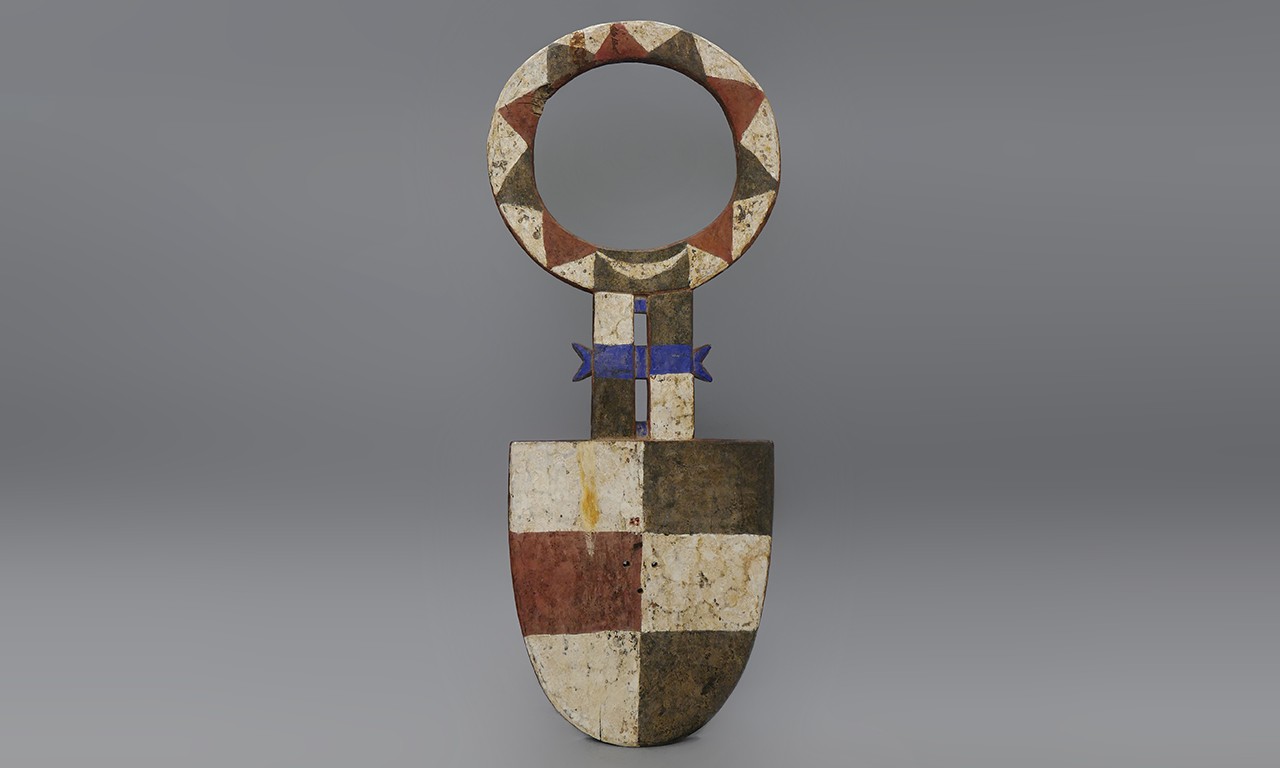 |
Mask (Bedu), mid 20th Century
Nafana culture; Ivory Coast
Wood and pigment; 74 1/2 × 31 × 3 3/4 in.
2018.14.1
Anonymous Gift |
Basking in Moonlight
This large wooden geometrical plank mask is known as a Bedu, and it originates from the Nafana people of north-eastern Ivory Coast. The masquerading of the Bedu is reserved during the Nafana lunar month celebration called Zçrçnyepç, "the dance and Bedu moon." For the entire month, pairs of male and female dancers perform nightly with the masks worn over their faces, with the extremities of the mask towering above their heads. The ceremony serves to rid communities of diseases, prevent agricultural disasters, cure human infertility, and to instruct the community on socially acceptable behavior. The circular ring atop the mask takes the form of an antelope’s horns, indicating that this mask is male. Female versions use a solid disk instead. Some Nafana have noted that the Bedu spirit comes from the moonlight itself.
Text and images may be under copyright. Please contact Collection Department for permission to use. References are available on request. Information subject to change upon further research.







Comments